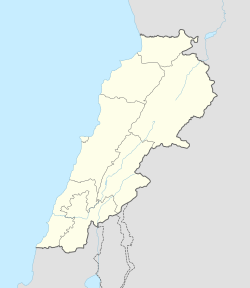| Aishiyeh massacre | |
|---|---|
| Part of Lebanese Civil War and Palestinian insurgency in South Lebanon | |
| Location | 33°24′29.89″N35°33′23.02″E / 33.4083028°N 35.5563944°E Aishiya, Lebanon |
| Date | 19–21 October 1976 |
| Target | Lebanese Christians |
Attack type | Massacre |
| Deaths | 70+ [1] |
| Injured | 100 [1] |
| Perpetrators | |
The Aishiyeh massacre was a massacre in 1976 in Aishiya, [2] Lebanon, of more than 70 Lebanese Christian civilians, [3] including at least 7 under the age of 16, by the Syrian backed[ citation needed ] Palestinian factions Fatah and As-Sa'iqa during the Lebanese Civil War. Four people were reported to be executed and one was burned alive. [1] The village was depopulated and used as Palestine Liberation Organization base of operation. [4] The Online Encyclopedia of Mass Violence estimated that at least 100 people were injured in the attack. [3]
The town was attacked again by Saika on November 5, 1977, killing 41 people. [5]
